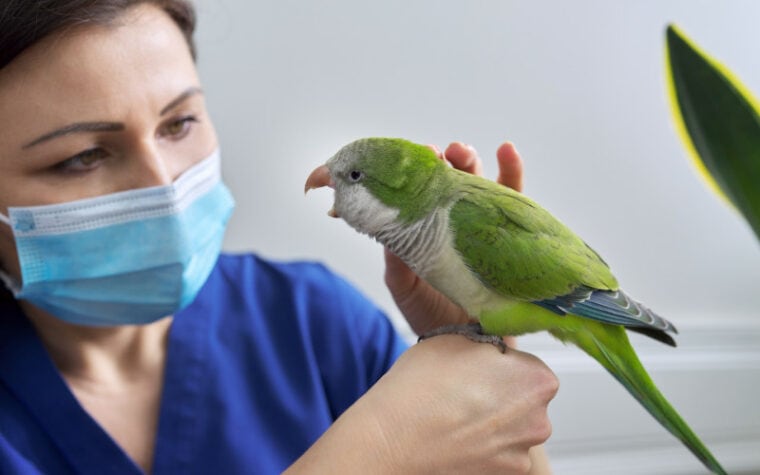
Malnourishment is the number one health problem in our pet birds. It impacts every problem on this list and has deadly consequences for pet birds all over the world.
Read this article to learn more about how our pet birds get numerous health problems because of malnourishment and other husbandry-related oversights.

The 9 Common Pet Bird Health Problems
Viral, bacterial, and fungal infections can all infect birds, just like dogs and cats. As such, birds also need regular physical check-ups and to see the doctor when they are sick. How common certain infectious bird diseases are is often controlled by where you live. So, common infectious diseases in Australia may not be as common in the United States or Canada.
And while the list of infectious diseases is long, we will focus on more relevant health problems that can affect your bird. The problems listed here are very common worldwide and, in most cases, can be prevented by you—or at least delayed for a little longer.
1. Malnourishment
When most people think of malnourished animals, they imagine them starving. But malnourished animals can get enough calories to not starve but still not get all the nutrients they need to be healthy. Most pet birds are fed seed diets. Eating seeds is like eating fast food for 20 years. They are high in calories but low in nutrients.
Wild birds do not just eat seeds, so our birds should not be restricted like that either. Most of our pet birds are naturally omnivores; they eat fruits, vegetables, and protein, usually in the form of seeds, nuts, or even insects or small amounts of meat. But so many of our pet birds aren’t even offered fruits and vegetables! It causes absolute havoc on their health.
Seeds are all fat and protein. As a result, the lack of proper nutrients can affect all parts of their bodies, including the liver, heart, blood vessels, bones, skin, reproductive tract, and respiratory tract.
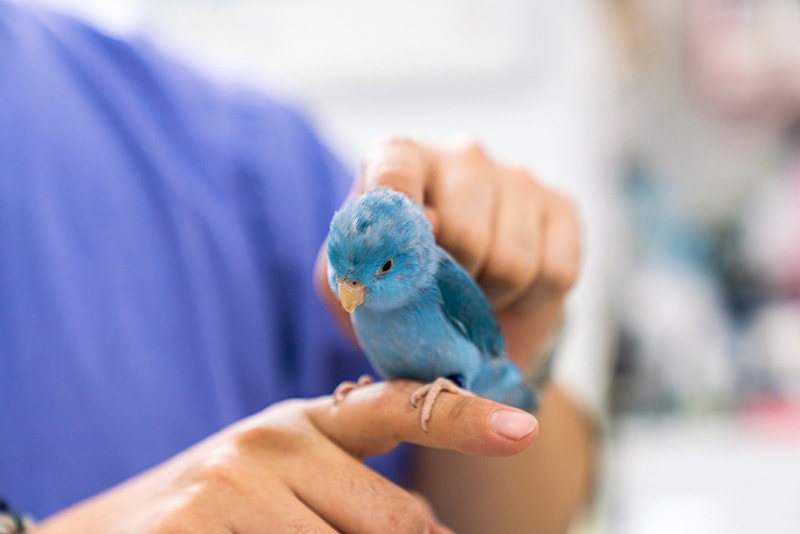
2. Obesity
Obesity in pet birds is common because they are fed diets that are exclusively fat and protein. So, they get fat, making it difficult for them to fly and walk. It also means they carry more weight on their feet.
3.Vitamin Deficiency Problems
Seed diets are not a balanced diet. They do not have a healthy dose of vitamins. And as a result, most of our pet birds are deficient in vitamins. And this can snowball into various health problems for the skin, respiratory and immune systems.
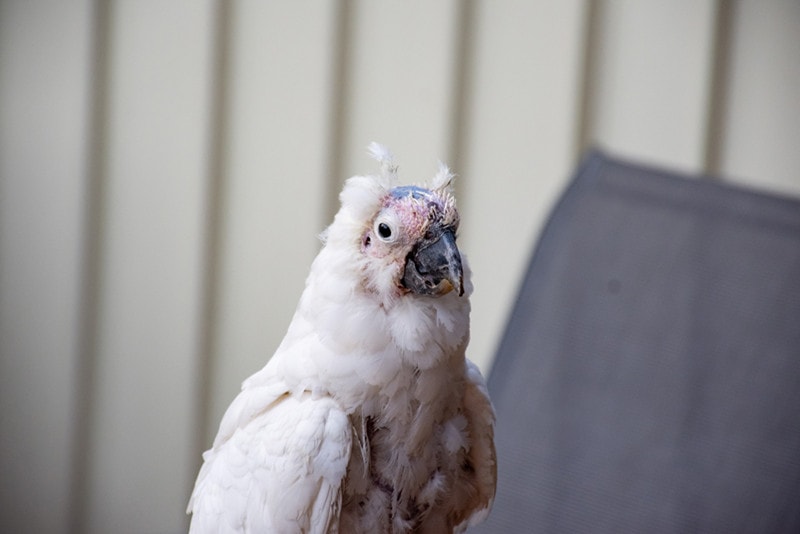
4. Metabolic Bone Disease
Seed diets do not have enough minerals. As a result, a bird’s skeleton can start disintegrating because of their poor diet. This is called metabolic bone disease. It can lead to fractures, arthritis, and severely immobilized birds.
5. Liver Disease
When omnivores eat only fat and protein, their liver can become severely stressed and diseased. There are many ways that liver disease can manifest, but one of them that is particularly easy to follow logically is hepatic lipidosis: With a diet high in fat, the liver becomes overwhelmed with fatty cells and cannot function normally.
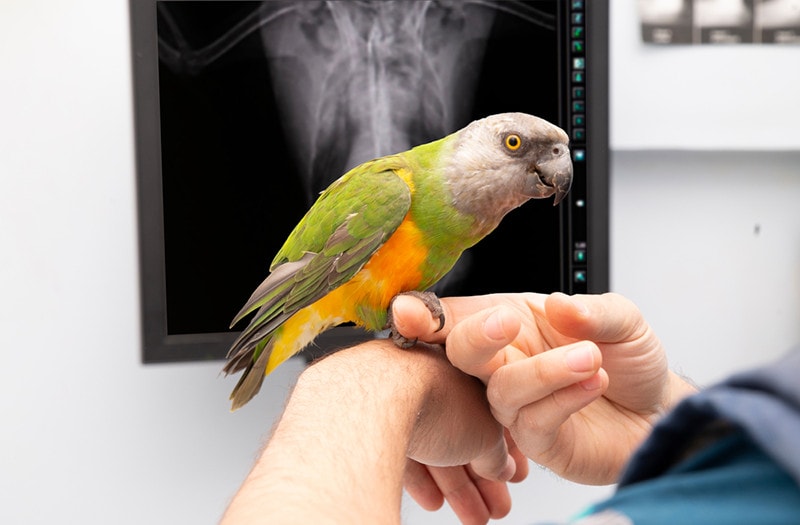
6. Heart Disease
In our bigger birds, the ones that tend to live longer heart disease is also a problem. This area of medical knowledge is growing quickly. And once again, exclusively all seed diets are a major contributing factor.
Do not feed your bird only seeds. They must eat fruits, vegetables, and commercial pellets that are balanced with essential vitamins and minerals.
7. Pododermatitis
Imagine you had to stand up for 24 hours a day. Can you imagine the state of your feet? Now, imagine if you had to stand exclusively on a concrete or hardwood floor. The bottoms of your feet would quickly get sore and develop blisters.
Our pet birds do not lie down to rest their feet. Normally, in nature, this is not a big problem because they stand on all types of things like big branches, little sticks, soft grass, or a bark-covered stump.
But in almost every bird cage, the perches that birds sit on are all the same.
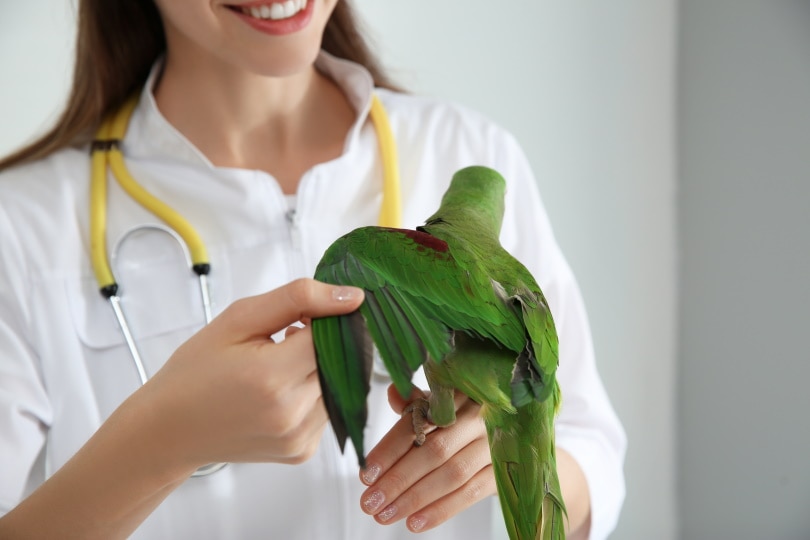
Make sure your bird has a variety of perches to stand on with different sizes, shapes, and textures. Otherwise, they will get painful sores and blisters on the bottom of their feet, called pododermatitis. Just make sure they can’t eat the perches and get sick.
8. Physical Injuries From Falling
One of the most common injuries pet birds get is from falling. Many pet birds are not very good flyers. They either never had the chance to learn growing up or they cannot practice now or both. As a result, they can be rather clumsy.
Even if they don’t fly, birds can climb high up in a room and then get stuck and fall. The other thing that happens to a lot of birds that are good flyers is they get their wings clipped and suddenly fall like a rock.
If you clip your birds’ wings, realize that they will not know that their wings are clipped. They will jump to fly away, like they always have before, but then will plummet to the ground. Without their wings, they can’t slow themselves down as they fall.
They can break their legs or wings, or they injure their keel (their chest) as they slam into the ground.

9. Reproductive problems
If you own a chicken, reproductive problems will be more common than in a standard pet bird. The main reproductive problems are being hyper-reproductive, having egg problems, and internal reproductive tract problems.

Conclusion
You can do a lot to protect your pet bird’s health just by changing the ways you take care of them. Our pet birds have a lot of love and entertainment to give us. By making sure their diet, their home, and their social life are as bird-friendly as possible, we can return the favor.
Featured Image Credit: VH-studio, Shutterstock








